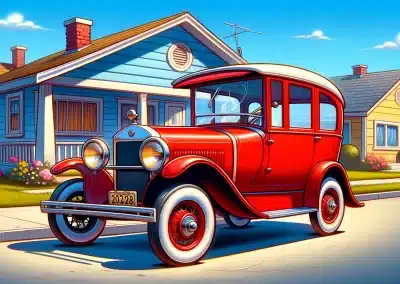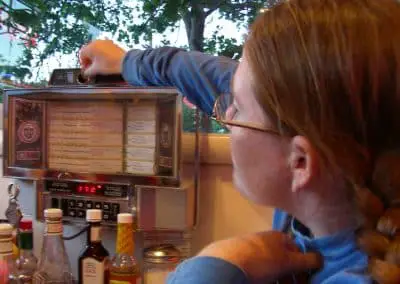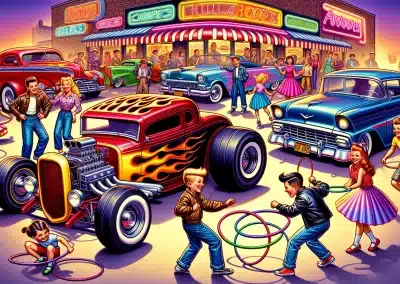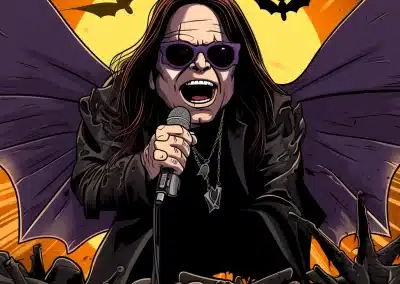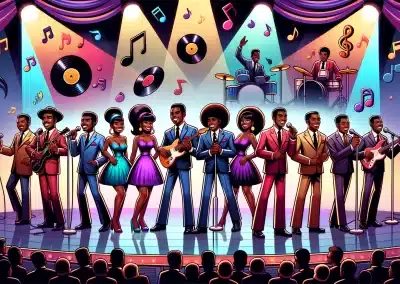Catchphrases in Television. A catchphrase is a well-known sentence or phrase, typically one that is associated with a particular famous person. They have long been a staple of popular culture, acting as a verbal badge of identification that instantly connects an audience with a character or a show. Catchphrases play an integral role in television, helping in character development and making these characters memorable. These memorable lines often infiltrate everyday language and become a part of our vernacular.
Viral Memories is a website that offers a treasure trove of nostalgic content related to toys and games, pop culture, and food and drink. They provide articles and guides on various topics, sparking fond memories and creating a sense of nostalgia for readers. This article dives into the world of television catchphrases, exploring their power, their impact on pop culture, and their evolution over the years.
The Power of Catchphrases in Television
Catchphrases have the power to make a character iconic and memorable. They are often the key that unlocks the audience’s memory of a character or a show. For example, Fred Flintstone’s catchphrase, “Yabba dabba doo,” from The Flintstones, instantly brings to mind the character and his animated world. Similarly, Homer Simpson’s catchphrase, “D’oh!,” expresses his dumb frustration and has become synonymous with the character. These catchphrases have become so ingrained in our collective consciousness that they often evoke an emotional response, reminding us of the laughter, tears, or excitement we felt while watching these shows.
Some catchphrases have also found their way into everyday situations, going beyond the realm of television. Larry David’s catchphrase, “Pretty, pretty good,” from Curb Your Enthusiasm, is fun to use in everyday conversations to express satisfaction. Television has provided memorable lines that have become part of everyday language for nearly 90 years. Lines like “It’s gonna be legen — wait for it — dary” from How I Met Your Mother have infiltrated everyday language and become popular phrases. These catchphrases have permeated our daily lives, influencing the way we talk and communicate.
Iconic Catchphrases from Different Genres
Television genres from sitcoms to animated shows and from game shows to talk shows have given us some of the most famous catchphrases in television history. Sitcoms, in particular, have given us iconic catchphrases that have become part of our everyday conversations. The catchphrase “How you doin’?” from Friends, spoken by Joey Tribbiani, has become a popular pick-up line. The phrase perfectly encapsulates Joey’s character as a lovable womanizer and has become synonymous with his character.
Another example is the catchphrase, “Yada, yada, yada,” from Seinfeld. This phrase is often used to summarize a long and boring story. And who can forget “Marcia, Marcia, Marcia!” from The Brady Bunch, which perfectly captures Jan Brady’s frustration with her sister’s popularity? These catchphrases have become embedded in our culture, serving as cultural touchstones that remind us of our favorite sitcom moments.
Animated TV shows also have their share of iconic catchphrases. The catchphrase “D’oh!” from The Simpsons, uttered by Homer Simpson, has become a classic expression of dumb frustration. And Fred Flintstone’s catchphrase, “Yabba dabba doo,” has become a popular catchphrase that is easily recognized and replicated. Other notable catchphrases from animated shows include “What’s up, doc?” from Bugs Bunny and “I’m ready!” from SpongeBob SquarePants.
Game Shows and Talk Shows
Game shows have also contributed iconic catchphrases to our everyday language. For example, “Come on down!” from The Price Is Right is a catchphrase that invites contestants to join the show. It creates a sense of excitement and anticipation, making the audience feel like they are part of the game. And “The tribe has spoken” from Survivor has become a popular phrase to indicate a final decision or judgment. This phrase has become synonymous with the show, representing the brutal reality of the competition.
Talk shows and news shows also have their share of memorable catchphrases. “Heeeere’s Johnny!” from The Tonight Show is a catchphrase associated with Johnny Carson’s entrance. It has become an iconic phrase that signifies the start of the show. And “And that’s the way it is” from Walter Cronkite’s news closing line has become a well-known phrase that signifies the end of a report. These catchphrases have become part of television history, shaping the way we perceive and remember these shows.
Impact of Catchphrases on Pop Culture
Television catchphrases have had a significant impact on American pop culture. They have influenced our language, our humor, and our perspectives. Catchphrases from shows like “Happy Days,” “The Honeymooners,” and “The Simpsons” have become part of the cultural lexicon. They are often referenced and replicated in various forms of media, from movies and music to books and Internet memes. This impact is a testament to the power of television and its ability to shape and influence our culture.
Catchphrases have also made their way into commercials. “I can’t believe I ate the whole thing” and “Where’s the beef?” are examples of catchphrases that originated from commercials and have become part of television history. These phrases have become so popular that they have transcended their original context and have become part of our everyday conversations. They serve as reminders of the power of advertising and its ability to create memorable and impactful messages.
The Evolution of Catchphrases in Television
Catchphrases have evolved over the years, reflecting the changing times and sensibilities. For example, catchphrases from the 1950s like “Look! Up in the sky! It’s a bird, It’s a plane! It’s Superman!” from Adventures of Superman have a nostalgic charm. These phrases take us back to a simpler time, evoking a sense of nostalgia and fondness. In contrast, catchphrases from the 1990s like “How you doin’?” from Friends have a more modern and relatable appeal. These phrases resonate with our contemporary experiences and sensibilities, making them relevant and relatable.
However, some catchphrases that were once funny have faded in humor due to changing awareness and sensitivity. For example, catchphrases like “Bang! Zoom! To the moon!” from The Honeymooners and “Jane, you ignorant slut” from Saturday Night Live are no longer considered appropriate or humorous in today’s context. This change reflects our evolving cultural standards and our growing awareness and sensitivity towards issues of sexism and violence.
Nevertheless, there are catchphrases that have stood the test of time and continue to be iconic. “Live long and prosper” from Star Trek, “You’re fired!” from The Apprentice, and “Here’s Johnny!” from The Tonight Show are examples of catchphrases that have become part of popular culture and are recognized by people of all generations. These catchphrases have transcended their original context and have become cultural symbols, representing the enduring appeal of television and its ability to create memorable and impactful moments.
Conclusion
Catchphrases play a crucial role in television, helping in character development, making TV shows memorable, and infiltrating everyday language. They have the power to make characters iconic, contribute to the cultural lexicon, and influence our everyday conversations. They also offer a fascinating insight into our culture, reflecting our changing times, sensibilities, and values.
Viral Memories offers readers the opportunity to explore more nostalgic content related to toys and games, pop culture, and food and drink. It provides a platform for readers to reminisce about the past, relive their fond memories, and engage in a shared sense of nostalgia. So, the next time you hear a familiar catchphrase, remember the power it holds and the memories it brings back. After all, as the famous catchphrase from The Wonder Years goes, “Memory is a way of holding onto the things you love, the things you are, the things you never want to lose.”
Did William Shatner Sell His Kidney Stone?



